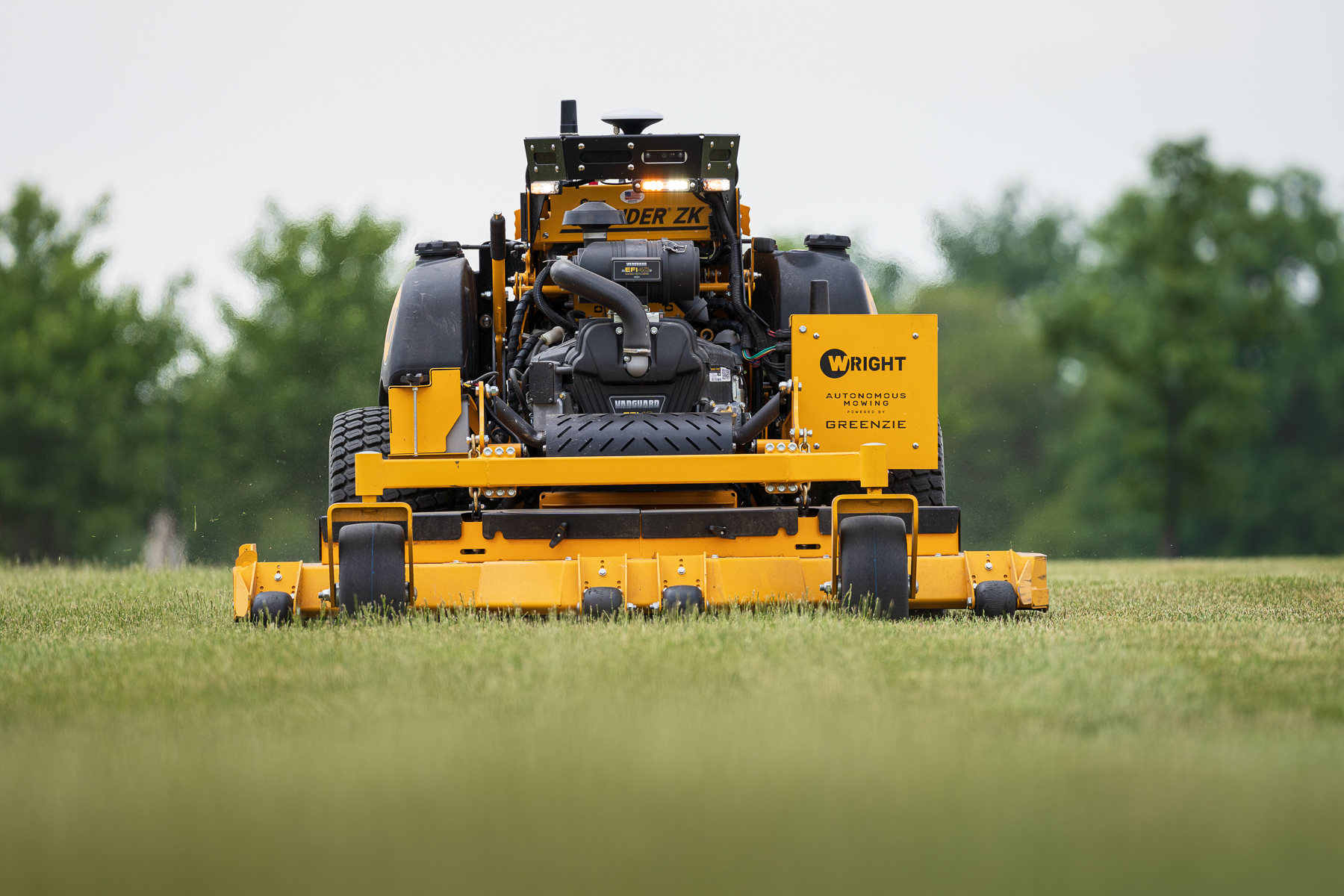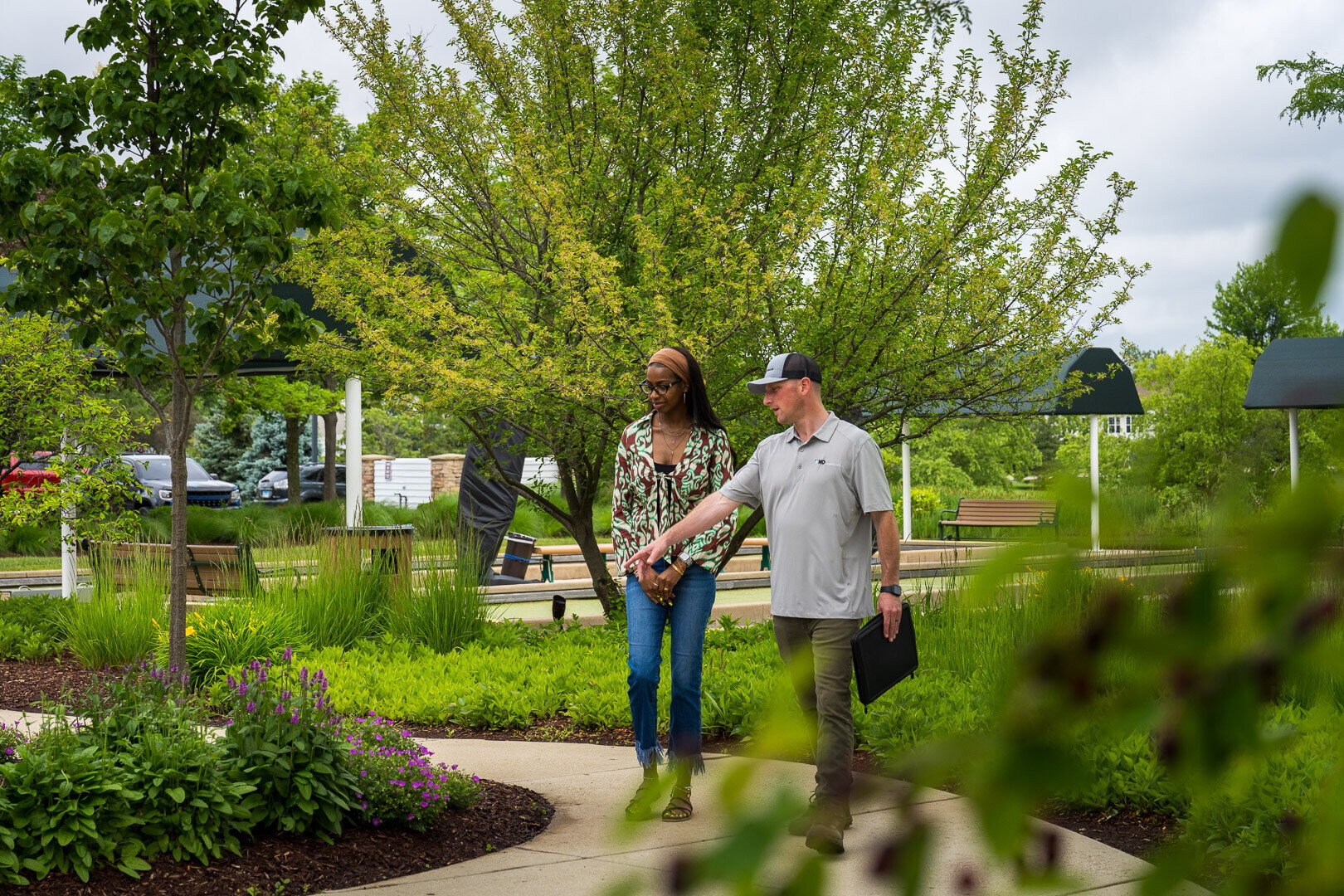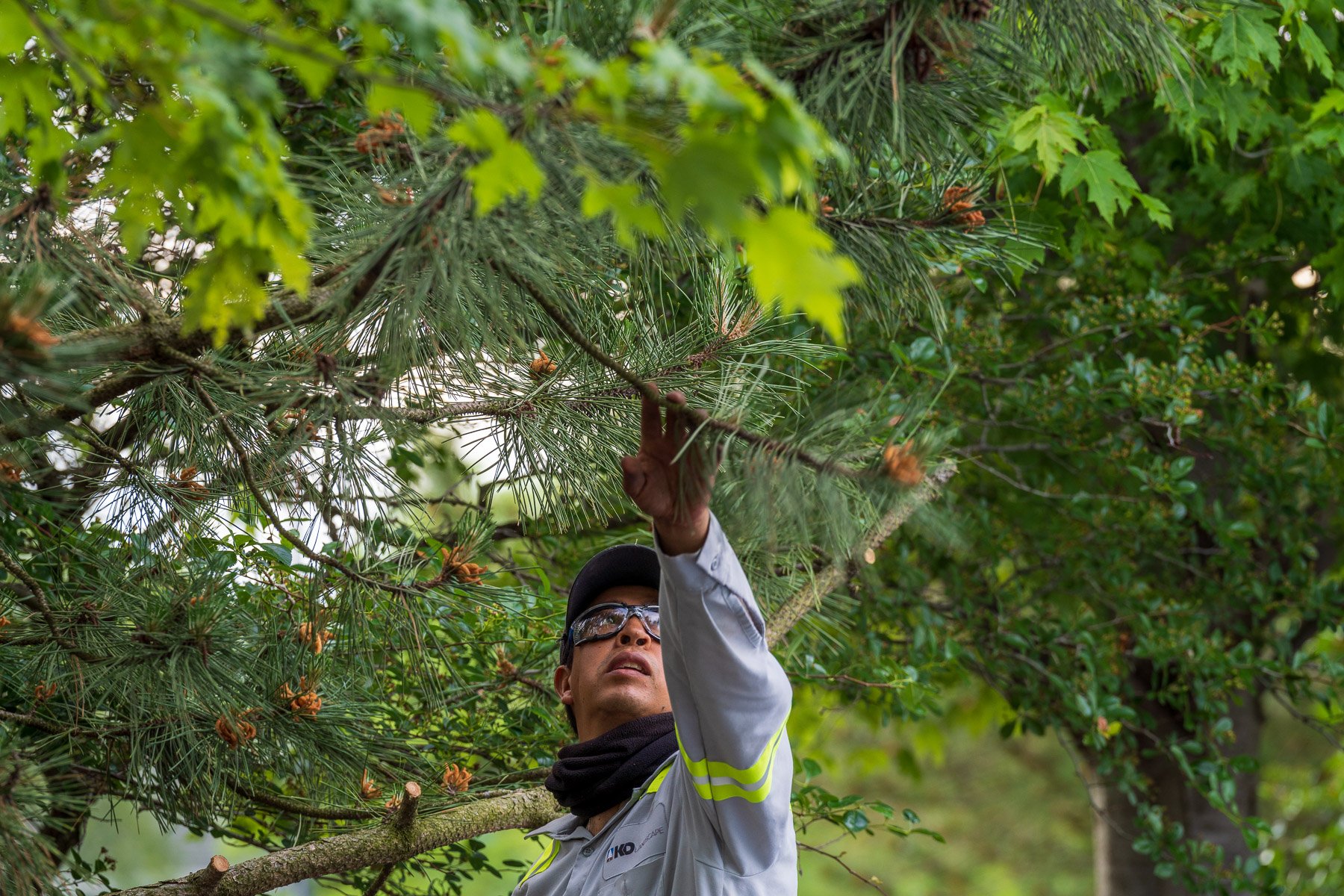Sure, Chicago summers can get hot with average temperatures between 78 degrees and 92 degrees Fahrenheit, heat radiating off of concrete surfaces, air conditioning blasting, sweat dripping off your brow the moment you walk outside. You get the picture.
But fearing dry, hot weather is no reason to let your commercial landscape become bland and unattractive. You can still have a nice array of summer colors and textures to dress up your property despite the heat – and not only near entryways or high-visibility areas, but also near parking lots and in your toughest, high-traffic areas.
Since a commercial facility is a busy, hectic place, your plants have to maintain the pace at these sites. Whether you manage an office park, a retail center, an industrial property, an educational facility or a hospital, you still want your landscape to look good no matter how hot and dry the summer can get.
This is why landscape design for hot weather matters on Chicago commercial sites.
Let’s look at some drought-tolerant trees and drought-tolerant shrubs that you can rely on for a professional and polished look all summer long.
10 Best Drought-Tolerant Landscape Plants For Commercial Landscapes in Chicago
When it comes to landscape design for hot weather, selecting the right plants is crucial to ensure success. Otherwise, your property can start to look pretty dry, wilted, and rundown.
When choosing plants, remember to consider site location, sun exposure, soil condition, irrigation availability, and traffic. Plant sun-loving plants in areas that receive 6-plus hours of sun and shade-loving plants in those that receive less than 4 hours of direct sunlight. There are similar rules for each plant on soil moisture and type.
The following varieties are ideal for Chicago commercial facilities and make excellent additions when landscaping for drought tolerance.
1. Hackberry, Celtis occidentalis
The hackberry tree can reach 40 to 70 feet tall. Its adaptability to various soil types and environmental conditions, coupled with its resistance to pollution and disease, makes it a reliable and low-maintenance, drought-tolerant tree for Chicago commercial landscapes.
One of the standout features of the hackberry tree is its distinctive bark, marked by corky ridges that give it a unique and rugged appearance. Hackberry flowers are typically greenish and appear in clusters.
%20CC.jpg?width=4088&height=3067&name=Hackberry%20(Celtis%20occidentalis)%20CC.jpg)
The tree’s leaves are simple and serrated, providing a lush, green canopy in the spring and summer before turning yellow in the fall. The hackberry also produces small, dark purple fruits that are highly attractive to birds.
The hackberry’s root system also helps prevent soil erosion, making it an environmentally beneficial addition to any commercial landscape.
2. Purple Beautyberry, Callicarpa dichotoma
The Purple Beautyberry is a drought-tolerant shrub with eye-catching berries that add pops of color to a commercial landscape.
This shrub grows to about 3 to 4 feet high, making it ideal for borders or as a focal point with other plants in an entryway bed.
%20CC.jpg?width=2875&height=2000&name=Callicarpa%20americana%20(american%20beautyberry)%20CC.jpg)
In the spring and summer, the Purple Beautyberry has small, delicate pink or lavender flowers that attract butterflies. Then, in the fall, the leaves begin to turn yellow and drop, and clusters of vivid, metallic-purple berries emerge. These berries persist into winter, providing visual interest.
3. Red Twig Dogwood, Cornus sericea
This versatile deciduous, drought-tolerant shrub brings year-round beauty to Chicago commercial landscapes. Best known for its striking red twigs in winter, this hardy, low-maintenance shrub thrives in a wide range of conditions, making it adaptable to most locations on your property.
.jpg?width=2948&height=2479&name=red%20twig%20dogwood%20(CC).jpg)
The red twig dogwood can grow 7 to 9 feet tall and wide, forming a dense, multi-stemmed shrub that offers structure.
In the spring and summer, the Red Twig Dogwood showcases lush green foliage and clusters of small white flowers, which give way to white or blue-tinged berries that attract birds. Come autumn, the leaves transition to a warm, reddish-purple hue before falling, revealing the shrub’s signature bright red stems.
4. Big Bluestem, Andropogon gerardi
This native grass can fit well in drought-tolerant landscapes with its tall, slender stems of bluish-green foliage, which turn a rich, reddish-bronze in the fall.
%20CC.jpg?width=4608&height=3456&name=Big%20Bluestem%20(Andropogon%20gerardii)%20CC.jpg)
Its distinctive seed heads resemble turkey feet, which add a unique ornamental feature. Plant this hardy, perennial grass in full sun and well-drained soil for a low-maintenance option that can reach heights of 4 to 6 feet.
5. Side-oats Grama, Bouteloua curtipendula
Landscaping for drought can be elevated with this hardy, native perennial grass.
This plant gets its name from its oat-like seed spikes that hang on one side of its slender stems. This grass can grow 2 to 2.5 feet in height, featuring blue-green foliage that turns a striking reddish-brown in the fall.
The extensive root system of this grass can also help stabilize the soil, contributing to erosion control.
6. Rock Cotoneaster, Cotoneaster horizontalis
This versatile and attractive drought-tolerant landscape addition is adorned with small, glossy leaves that turn vibrant shades of red and orange in the fall.
In spring, Rock cotoneaster produces tiny, pinkish-white flowers that give way to bright, red berries in the fall, which persist into winter, adding some color during those dreary months.

Requiring minimal pruning and care, this plant is often used as a groundcover.
7. Yarrow
Yarrow is known for its feathery, fern-like leaves and clusters of tiny flowers that bloom in shades of white, yellow, pink, and red. You’ll see the blooms in late spring to early fall.

As a great part of a drought-tolerant landscape, yarrow is a perennial that grows 1 to 2 feet in height and thrives in full sun and well-drained soil.
8. Blue False Indigo, Baptisia australis
Landscape designs for hot weather can also include this native perennial.
Blue False Indigo is valued for its showy, pea-like flowers that appear in late spring to early summer. The blooms are rich, deep blue, but you can also find them in violet and indigo shades.
%20CC.jpg?width=3264&height=2448&name=Blue%20False%20Indigo%20(Baptisia%20australis)%20CC.jpg)
Reaching 3 to 4 feet tall, this plant's blue-green foliage and attractive, black seed pods add interest to any commercial landscape.
9. Purple coneflower, Echinacea purpurea
Color is an important part of drought-tolerant landscapes, and purple coneflower delivers with daisy-like flowers that have purple-pink petals surrounding spiky, orange-brown centers..
%20CC.jpg?width=4365&height=3012&name=Purple%20Coneflower%20(Echinacea%20purpurea)%20CC.jpg)
Blooming from early summer to fall, purple coneflower is resilient, growing to 2 to 4 feet in height. It’s a favorite of birds as well. Once established, this perennial can withstand heat and humidity.
10. Bundleflower, Desmanthus illinoensis
This drought-tolerant landscape perennial has unique flower clusters that look like whitish pink fuzzy balls that bloom in early to midsummer.
%20CC.jpg?width=800&height=600&name=Bundleflower%20(Desmanthus%20illinoensis)%20CC.jpg)
The flowers are followed by distinctive seed pods that resemble beads on a string. Plant this in full sun or partial shade, and it’ll handle most soil types. It’s also a favorite of birds and wildlife.
Landscaping for Drought Can Make Your Commercial Property Shine in Summer
These are the best plants for drought-tolerant landscapes that can be both beautiful and resistant to summer weather conditions.
Choosing the right drought-tolerant trees and drought-tolerant shrubs can be challenging. If you choose the wrong plant, you may waste time dealing with poor aesthetics and potentially have to replace it later.
We get it. KD Landscape can help. We know what plants work best in Greater Chicago. Let us help you get your property looking its best in summer.
Want to learn more about how to choose the best drought-tolerant plants for your Greater Chicago commercial property? Get started today with an on-site consultation. We’ll review your options together, so you can make a great choice.
Image Sources | Hackberry, Beautyberry, Red Twig Dogwood, Big Bluestem, Side-Oats Grama, Cotoneaster, Yarrow, Baptisia, Coneflower, Bundleflower








